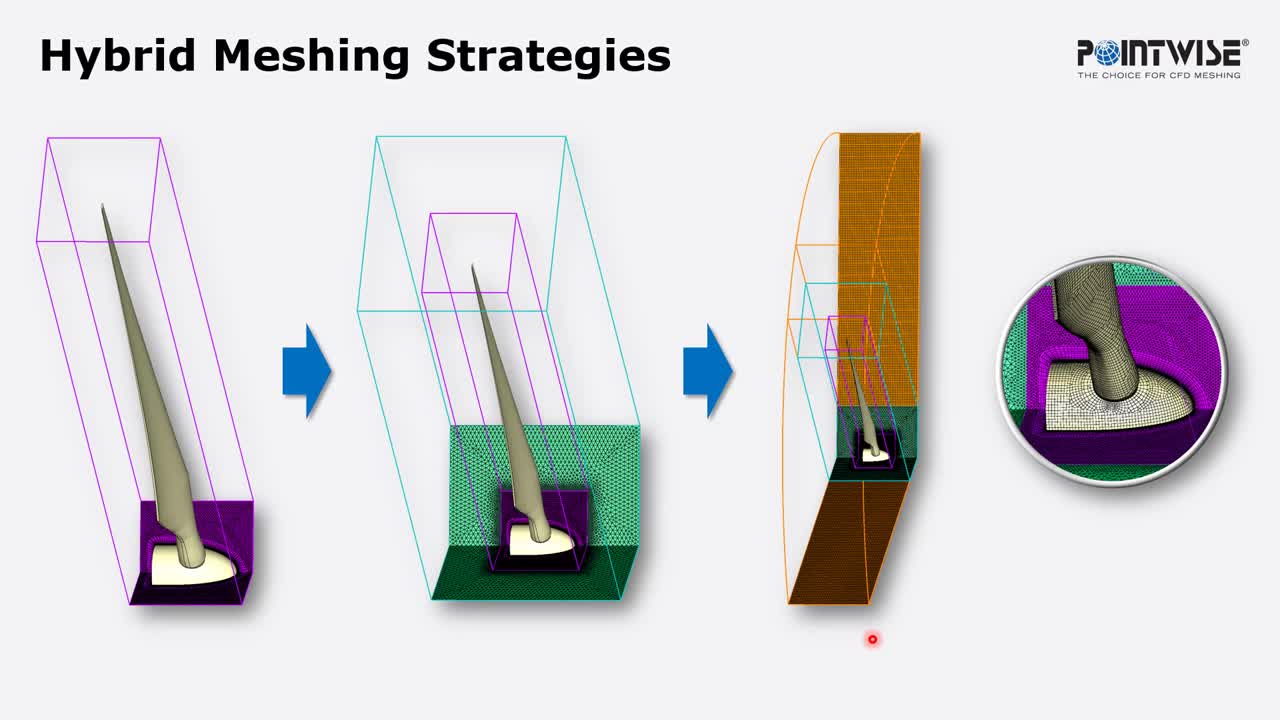Hybrid Conformal Meshing for Wind Farm CFD Applications

Advances in materials and aerodynamics are pushing towards longer and more complex blade designs enabling them to more effectively capture energy from the wind. In addition to their increasing size, their interaction with the surrounding environment expands the dynamic spatial and temporal range when modeling such systems. The increased dynamic range presents unique challenges, particularly when generating meshes with the resolution necessary to accurately capture the flow phenomena of primary interest.
While multi-block structured meshing strategies have dominated the wind energy field, there has been a shift toward hybrid meshing for its ability to more easily adapt to arbitrarily complex blade shapes. In this webinar we describe a hybrid meshing strategy using the Sandia National Labs CX-100 horizontal axis wind turbine blade as a test case that borrows many characteristics from multi-block structured methods without the topological complexity, allowing for quick turn-around times and the ability to minimize the impact a geometry change and subsequent remeshing operations would have on the flow solution. In addition, we demonstrate a technique to transition from the terrain scale to the wind turbine scale, resulting in a fully conformal mesh across the entirety of the wind farm. This technique has been automated to support the arbitrary placement of wind turbines for wind turbine siting applications.
Overview
- Rapidly generate hybrid viscous meshes for wind turbines with flow-aligned hexahedra using Pointwise’s T-Rex advancing layer technique
- Combine unstructured and structured meshing techniques to maintain cell flow alignment throughout the computational domain
- Efficiently move from the wind farm scale to the wind turbine scale using conformal hybrid meshing techniques and Glyph scripting
Presenters
Dr. Pita joined Pointwise as a senior engineer on the Applied Research Team in September 2010 after completing a year-long term as Postdoctoral Fellow at MIT. In 2013, he joined the Technical Support Team. Dr. Pita earned a B.S. and an M.S. in Nuclear Engineering from the Instituto Balseiro in Argentina and a Ph.D. in Mechanical Engineering from Mississippi State University. His Ph.D. research involved “Modeling of oxide bifilms in aluminum castings using the Immersed Element-Free Galerkin Method.”